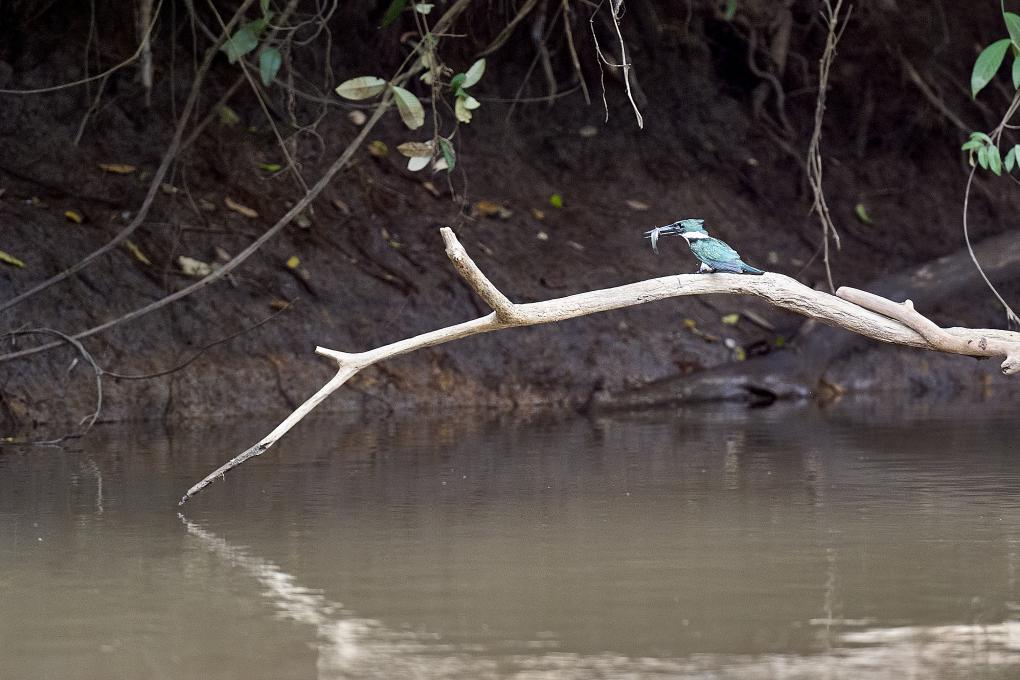The Cornell Lab Bird Academy › Discussion Groups › Bird Photography with Melissa Groo › Practice Matching Your Gear to Your Goals
-
My goals for bird photography are more often to fill the frame than not. I would like to do more birds in flight, and that will require more practice for sure. I use a Canon 6D with either a Canon 300mm F4L or the Tamron 150-600 5.6-6.3 G2. I love the reach of the Tamron, but I cannot hand hold it. I have a ProMaster gimble head on a Manfrotto 055 tripod. For those that haven't invested in a tripod yet, I can attest to Melissa's comments on getting the right one the first time. It will be less expensive in the long run. I now have three tripods; the sturdiest one that holds the gimbal head all the time because swapping it out was a PITA; the one I had prior to getting the 150-600 and gimble head; and the one I bought way before any of these, when I knew very little about it all. . The drawback on the gamble is the weight of everything and lugging it out where the birds are. So I take my 300 on hikes. Sometimes I use the 1.4 teleconverter with it as well. I find that the fill the frame or with environment question depends on the subject and/or the environment.
-
I am a complete newbie to bird photography so my goal seems basic: how to get a good, sharp, well-lighted stationary shot. Sounds "basic," but harder than it looks! This means a major upgrade to my equipment. I've had Canon DSLRs in the past and have a couple of older lenses, including a 55-200mm 1:4.5-5.6 II USM. I also inherited a nice little Fujifilm X-E1 but have only one lens, a Super EBC XF 35mm 1:2 R WR 043. The major equipment question for me is which direction to go: Canon (new body and longer lens) or Fujifilm (long lens). The stationary photos on the Macaulay site that appealed to me were almost all done with Canons - 7D Mark II and 5D Mark IV. Based on comments from others in this group, it looks like a Canon 100-400mm with a 1.4x teleconverter would be a good lens option. I'm totally open to suggestions. You all are much more experienced than me!
-


 A very important factor is to think hard about what level of equipment is appropriate for you. Probably the first thing to consider is how much money are you intending to put into this? I am not familiar with the others, but I have a lot of hours on the Canon system
I started with an old Canon T3, but soon changed to a Canon 7D II and am extremely happy with it. I have tried a variety of lenses, both Canon and Sigma and would rate the Canon 100-400mm f/4.5-5.6 L IS II to be the best overall choice. With good light the 7D will handle autofocus with the 1.4 teleconverter. I like the crop factor body as I am working semi-professionally from Panjin, Liaoning, China and birds (or any wildlife) are generally very hard to get close to.
I also currently have a Sigma 150-600mm Contemporary lens as my main use lens, which I am happy with, but it is heavy and I intend to end up using it only on tripod with a gimble. Next trip back to the USA I plan to get a new Canon 100-400mm and a 1.4 teleconverter. This all gives me what would be considered to be minimal mid range or semi-professional equipment but it is not necessary to spend as much as I have to obtain some very good photos. (7D about $1400; Canon 100-400mm about $2200; Sigma 18-300mm f/3.5-6.3 about $400; Sigma 150-600 Contemporary about $900)
For a low cost rig as a starter or as good enough for those who just want to share on social media, one could consider something more like the Canon Powershot SX70. I also have one of those and it makes a great travel camera. I often use it to just have something along with me on a walk in the park when I am not really expecting anything special. It is a mirrorless with a non-interchangable lens, but it is a superzoom going from a 35mm equivalent of 21-1365 and is very light weight! Not the best for low light situations, but overall I am very happy with it and you have everything you need to get some excellent birding photos. Best of all, it looks like it is currently going for about $550 USD, a lot less than the $3600 to step up to a minimal 7D birding rig.
The new Canon R5 & R6 give me a serious case of GAS (gear acquisition syndrome), but that like the 5D is stepping up to professional level gear and the prices reflect it. I might justify a 5Ds sometime in the future if the prices drop enough with the introduction of the mirrorless competition.
I probably won't be checking back here much, but I do have a thread on the birdforum.net which is an excellent place to find a supportive world wide community. My thread is at: https://www.birdforum.net/showthread.php?t=301937 and I would be glad to help anyone who posts to it.
A very important factor is to think hard about what level of equipment is appropriate for you. Probably the first thing to consider is how much money are you intending to put into this? I am not familiar with the others, but I have a lot of hours on the Canon system
I started with an old Canon T3, but soon changed to a Canon 7D II and am extremely happy with it. I have tried a variety of lenses, both Canon and Sigma and would rate the Canon 100-400mm f/4.5-5.6 L IS II to be the best overall choice. With good light the 7D will handle autofocus with the 1.4 teleconverter. I like the crop factor body as I am working semi-professionally from Panjin, Liaoning, China and birds (or any wildlife) are generally very hard to get close to.
I also currently have a Sigma 150-600mm Contemporary lens as my main use lens, which I am happy with, but it is heavy and I intend to end up using it only on tripod with a gimble. Next trip back to the USA I plan to get a new Canon 100-400mm and a 1.4 teleconverter. This all gives me what would be considered to be minimal mid range or semi-professional equipment but it is not necessary to spend as much as I have to obtain some very good photos. (7D about $1400; Canon 100-400mm about $2200; Sigma 18-300mm f/3.5-6.3 about $400; Sigma 150-600 Contemporary about $900)
For a low cost rig as a starter or as good enough for those who just want to share on social media, one could consider something more like the Canon Powershot SX70. I also have one of those and it makes a great travel camera. I often use it to just have something along with me on a walk in the park when I am not really expecting anything special. It is a mirrorless with a non-interchangable lens, but it is a superzoom going from a 35mm equivalent of 21-1365 and is very light weight! Not the best for low light situations, but overall I am very happy with it and you have everything you need to get some excellent birding photos. Best of all, it looks like it is currently going for about $550 USD, a lot less than the $3600 to step up to a minimal 7D birding rig.
The new Canon R5 & R6 give me a serious case of GAS (gear acquisition syndrome), but that like the 5D is stepping up to professional level gear and the prices reflect it. I might justify a 5Ds sometime in the future if the prices drop enough with the introduction of the mirrorless competition.
I probably won't be checking back here much, but I do have a thread on the birdforum.net which is an excellent place to find a supportive world wide community. My thread is at: https://www.birdforum.net/showthread.php?t=301937 and I would be glad to help anyone who posts to it.
-
-
I have recently switched from a Panasonic DC-FZ80 to the Sony RX10 Mark IV. Being relatively new to photography I figured this would be a good progression towards my goal of being able to capture crisp clear images of birds of all shapes and sizes in all types of habitats. After using the Media Search on Macaulay's website the majority of the images I was drawn to were captured by DSLR cameras. I guess once I am proficient with using my new camera on all settings the next stage in my progression will be to try my hand with a DSLR.
-
I am using a Nikon D5600 (cropped sensor) with an AF-S Nikkor 500mm 1:5.6E lens. I am in a Facebook group called Australian Bird Photography and took note of what lenses the photographers of the more professional looking photos were using. That's how I came across the Nikkor 500mm. I've only had the lens for a reasonably short while so am still very much a 'learner'! I feel a lot of the time my photography is a bit 'hit and miss'. I'm still trialing what settings work best in various situations. My goal is to shoot crystal clear shots that I can crop to show the exquisite detail of the bird. I love water birds particularly but any bird is a pleasure to photograph! I hope Melissa will be talking about how to get crisp photos! Sometimes I come home and load up my day's efforts onto the computer only to find the great majority of them are okay uncropped but not sharp enough to do a close crop. So disappointing. Hopefully I'll discover the trick to it one day soon! Any tips and tricks are welcome! Does anyone know if I could use a Nikon teleconverter with this set-up? Here's a couple taken recently with this lens.

 A grey shrike-thrush and two hoary-headed grebes.
A grey shrike-thrush and two hoary-headed grebes. -
Thanks for sharing your photos, I really like your grebes photo! Here are 3 tips that have helped me with sharpness: 1. Having solid support - tripod and gimbal (turn off any VR when using the tripod). 2. Back button focusing (decouple autofocus from shutter button to avoid shutter button accidentally changing focus). 3. Photographing during golden hour, side and front light helps define feather detail (use RAW and expose to the right). I mostly use a FX body with 300mm lenses and either 1.4x or 1.7x teleconverters. I’d be interested to hear how you go with your 500m!
-
@gnu_photographer @gnu_photographer thanks so much for the tips. That's super helpful! I really appreciate it. 😊 Will implement all three! Cheers Carole
-
Like you, I am not always super happy with the sharpness of my photos (I only shoot handheld for now). After reading Melissa's lesson on settings yesterday I changed two settings and today I found that my photos were much sharper. As a default setting I had center-weighted metering - Melissa has evaluative also called matrix metering. As a default I had group focus - Melissa has single-point focus. I made both changes and I am super happy with the result.
-
@Isabelle Thanks @Isabelle! Will give both of those a go, too! Fingers crossed! 😊🙏 Cheers Carole
-
-
I use a Canon 7D markII with a Tamron 150-600/ f 5-6.3. I mostly shoot from my car and use a beanbag tripod which has made a significant difference in my shots. Most of my photos are of birds perched, and close up. I enjoy seeing birds in flight and want to practice in this area. Browsing the photo library, which I was not familiar with, (and thank you ) I felt I had the right equipment and was very interested in the settings, particularly the shutter speeds. The few times I have attempted a bird in flight, I found it difficult to track the bird and my neck would start to hurt. Also the camera and lens weight make it difficult to assume a position to photograph. Would love to hear how others do this. All the photos below are held held and taken within a few minutes of each other. Lake Afton, outside of Wichita KS.


-
I am also very interested in learning techniques to photograph birds in flight. I found that the bigger (and slower) the bird is the easier it is. I take all my photograph handheld (I have a 100/400 lens so it is easier to hold than a 600). I follow the bird with my lens and tries to lock the focus. Then I take several shot in bursts. I use a high shutter speed (1000 at least). For smaller birds like hummingbirds, I try to focus on them when they are at the feeder or feeding in a flower. I find it challenging. I heard somewhere that it was easier to photograph white birds in flight because of the contrast. Also I keep my lens on off mode for OIS, it speeds up the focus. I hope this course will teach us some techniques. Would love to read what others do too.



-
@Isabelle These are very nice, and thanks for sharing how you take them. I will look more closely into this. I have the 400 mm lens as well. May need to change it up a bit.
-
@Betty Great shots!
-
-
I use a Canon 7D Mark II with a Canon 100-400 4.505.6 IS II USM and a l.4 converter. I am very pleased with this gear and have been using it for about 4 years. Most of my photos are handheld. My photos are for my own enjoyment. Here are a couple shots of Cedar Waxwings.


-
Beautiful photos! I love those birds.
-
Wow! Such great shots!
-
Great pics! One of my favorite birds. We get them late winter early spring in my area.
-
-
I was using a Canon 5D Mk II (full frame) and 7D (cropped sensor) in combination with a 400 prime and 100-400. These are great lenses but I wanted a bit more range. I tried adding a 1.4 teleconverter but then remembered (when I'd already arrived at my destination) that autofocus wouldn't work with the combination I had. I tried it with manual focus but I had to bin most of the photos. You can tape the pins to engage autofocus but I was reluctant to try that. So I decided to treat myself to a Sigma 150-600 Contemporary. I was unsure about getting a lens with such a big range after mostly using a prime, but so far so good. And I can take pics of the birds that would have been too close with the 400mm. I'm using it with the 7D to get even closer.
-
I owned a Sigma 150-600 C and must say that it is an excellent lens, especially considering the price! Really sharp and well worth the money!
-
-
I started birding a year ago for real (even though I have always enjoyed the presence of birds). I started taking pictures of birds so that I could later identify them at home and recognize them the next time. I have used ebird, Merlin and the Audubon app extensively, I have joined my local Audubon and went on numerous field trips. The more I am birding the more I want to take nice photos of birds. I used a Canon EOS DIGITAL REBEL XT with a 135mm lens at first. It was very challenging to take close up photos of birds - but it taught me to get close to bird without spooking them so I guess it was a good training. I then bought a used 300mm to see how it would change my photos. The added focal length made a huge difference and I got hooked on birding and taking photography. I now have an instagram account and I share my bird photographies daily. I am also following a huge community of birders/photographers and look at their inspiring photos daily on instagram. I listen to lots of birding podcast. I enjoy Wildlife Photo Chat where Melissa was recently a guest. I was lucky to acquire a Fuji Film XT-3 camera with a XF50-140mmF2.8 lens. I quickly added a teleconverter x2 and have taken great shots with this combination for a while. I very recently got a XF100-400mmF4.5-5.6 lens. It gives awesome results. It has a great reach and is also excellent to take video. My goal is to know my gear inside out to be able to make the most use of it. I am mostly using the autofocus mode and would like to get familiar with manual focus. I can say that it took me about a year, taking daily pictures of birds to get my head around how a camera works. I want to improve my knowledge of my equipment to be able to photograph what I exactly see on the field. Watching birds is so beautiful, I want to share the beauty I witness in nature through my photos. For now I am only photographing handheld.
-

 Sorry I replied to myself, I forgot to share example of photos with my Fuji Film camera - a House Finch (actually two of them), close-up in my backyard - and a male Wood Duck from a distance in a regional park.
Sorry I replied to myself, I forgot to share example of photos with my Fuji Film camera - a House Finch (actually two of them), close-up in my backyard - and a male Wood Duck from a distance in a regional park. -
If appropriate, please share your instagram account name. I would like to follow photographers taking this course! My instagram name is the same as my username. I really like how Melissa uses her instagram account to promote conservation and protection of the birds, and how this course focuses on teaching us photographers to always give birds their space. In thinking about my goals, these themes of conservation and protection are something I would like to ingrain into my photography.
-
@gnu_photographer Hi, It is totally fine, my instagram account is oiseaulune_ I just followed you:) I also like the conservation and environment protection message Melissa is sending.
-
-
Like most people taking this course, I want to improve the quality of pictures I take of birds. I currently have a Nikon D300 and a AF-S Nikkor 70-300mm f/4.5-5.6 lens. While I have taken some nice pictures (mostly by accident), I am taking this course to improve my technique and learn about equipment I can reasonably purchase to consistently take better, sharper pictures. I recently decided to purchase an full sensor camera and looked at Nikon D780 and D850. I decided on the D 780 because it fit my photography needs and goals and the extra money I saved would go to a lens. Most bird photographers recommend putting your money in a good lens. While I can't afford a 500 mm or 600mm lens, there are a couple of lenses I have been thinking about. One is the Nikkor 200-500 f/5.6 lens. Another is the new Nikkor 500 f/5.6 E PF ED VR lens because it is lighter and less expensive than the Nikkor 500 f/4 lens. Since both of these lenses are on backorder, I suppose I have time to get input from bird photographers with much more experience than I. I am also reviewing proper support for these lenses and have had good input on Really Right Stuff and Induro tripods. I will need to decide on a type of head for the tripod, either a ball head or gimbal to hold the camera and lenses. I suspect that I would like to add a teleconverter as well. My current lens will not support the use of a teleconverter. Since this section of the course is dealing with equipment, then any suggestions and input is greatly appreciated.
-
I’ve found having good support makes a huge difference to image quality, especially at the higher focal lengths (I am not good at handholding and keeping steady anything more 200mm). This is especially the case for me for lenses without image stabilisation and I think the D780, being a DSLR, has no in body image stabilisation. I suggest a gimbal, if you would like to take birds in flight. If you would like to take video too, I suggest looking at a fluid gimbal, which will give a smoother panning action.
-
-
I have been into birding since I was a child but have never acquired a decent camera system to document by passion. I have been using my phone! Ha ha. I decided to take the leap into professional gear and so 6 weeks ago I purchased a Canon EOS 7D camera and EF 100-400mm f/4.5-5.6L lens. I’m really loving the clarity and power of this lens!



-

 Does Melissa respond to the discussion group? I would like to get a teleconverter for these to lenses and was wondering if there is one specific converter that would work for both.
Does Melissa respond to the discussion group? I would like to get a teleconverter for these to lenses and was wondering if there is one specific converter that would work for both. -
I use the Nikon 1.4x teleconverter with the Nikon AF-S Nikkor 70-200 mm f/2.8G VR II lens. That should work fine for your Nikon lenses. You can also check the Nikon web site to check for lens compatibility for any of its three teleconverters (1.4, 1.7 and 2)
-
@Fred Thank you, Fred
-
@Fred I agree with checking for compatibility. I made that mistake with the first converter I bought.
-
The discussion boards are mainly for sharing your ‘homework’, answering the discussion questions and providing feedback or critiques to others. We highly encourage peer to peer support. Course authors occasionally might look at some posts and might respond but that is not required of them nor part of the course. Thanks for sharing.
-
-
I'm keen on learning how to photograph effectively from a car, as it appears to disturb the birds less than exiting the car and setting up. I have a bean bag to support the camera and lens, but would like to ask if anyone can recommend a good type of bag or stowage solution that makes it easy to stow and maneuver large lenses between stops. Especially when driving over rough terrain, putting the camera and lens on the car seat does not seem to work well. I'm wondering how Melissa stows her supertelephoto and DSLR between stops in the video "Compare Blinds" (at 4:30) :)
-
If you have a camera bag big enough to hold your camera with lens attached, you can simply put the combo in the bag with the bag on the front passenger seat. I've done that a lot in the past. Similarly, if you have a hard case, such as a pelican case, you could have that on the front passenger seat with the camera and lens in it and ready to go. I've also simply had the camera and lens laying directly on the seat with the foot turned so it's in the air. I have it laying so the body is near me, end of the lens pointed towards the other door, laying flush against the back of the seat. This makes it easiest to grab, least likely to move as it's as most in the V of the seat as possible, and if you angle the foot right, you can make it not roll at all. It still wouldn't help for slamming the brakes at high speed or an accident, but normal travel, even on a dirt road should be fine. Hope that helps. :)
-
-
I tried editing my original note but it doesn't show up. I added a note that the original kingfisher photo is 3105 x 2070 pixels and 3.6 MB. The version displayed is 1020 x 680 and 94 KB.
-
I enjoy photographing birds but don't consider myself a birder. Bird photography is hard, capturing birds in flight harder which is why I enjoy the challenge. I presently shoot with a Nikon D7100, 70-200 mm f2.8 lens with a 1.4 x extender. Being a crop camera, this gives me a maximum focal length of 420 mm. I'm toying with the notion of getting a full frame Nikon Z series mirrorless and a 200-500 mm f5.6 lens. I recently took a hard look at my bird photos from the past few years and find that whereas I previously cropped tight to the bird, I now prefer to crop to include much more of the bird's environment. So I reprocessed a number of these photos. In following this course, I looked at the Macaualy Library and find that it recommends a tight crop which I guess is appropriate for technical views of the bird but, in my opinion, does not offer optimum artistic scope. I've attached a photo of an Amazon Kingfisher to illustrate my point. This photo, was taken with a Nikon D80 and the 70-200 mm lens at maximum zoom.

-
I agree with you. I think photos that include the environment allow greater scope for storytelling. Like this great photo you posted!
-
If you get good enough at BIF that you start wanting a higher challenge, try photographing butterflies. Not that is a real challenge!
-
-
My bird photography can be split into two areas. 1.) Most of it is done on specific birding trips to exotic (non-UK) locations were I am cramming as much birding into two weeks as I can, with the aim of seeing as many species as possible and getting the best photos of those I do see. So here there is often little opportunity to plan and set up ideal photographic situations, and I need to get what photos I can and use the conditions I am presented with as best I can. As my experience and camera kit have improved I have got better at this, but there is always room for improvement. 2.) Photographing birds around my home area in Somerset, U.K. where the numbers of species are fewer than in the exotic locations, but where I do have the time to plan, wait for right conditions etc. I need to get better at this. This is my immediate main goal, and I want to be able to regularly get good portrait and action (flight) shots of my local birds. I have a Canon 7D MKII camera body and a Canon EF 100-400mm f/4.5-5.6L ID II USM lens that I am very happy with. I also have a Canon 1.4X teleconverter, but I tend to only use this when light conditions are good. In time I may add a 500mm fixed length lens and I am debating whether a Canon 5D MKIV body with a larger sensor may help me in low light situations, as I have had some disappointing results with my current system in critical, usually late afternoon or early evening shots of rare/unusual bird species that I only see once on a trip. But, that could be operator rather than kit? Hopefully this course will teach me where I have gone wrong. I feel that I am not using camera support systems well enough although I do have a large and smaller tripod and a conventional Manfrotto head and a smaller ball head. The tripods are aluminium and the large one is heavy. I may (budget depending) look at acquiring a Gimbal head and a carbon-fibre tripod in the future. With regards blinds and clothing etc I am not a great enthusiast of Ghillie Suits or camouflage clothing, and I am not sure whether a popup blind would still be there the next day if I left it in my local wood. The nature reserves in our area would not be too enthusiastic about bird photographers leaving blinds around the reserves or going off the designated paths. They provide permanent hides (or blinds) that photographers use a lot, and this is what I use. I have learned some tips from the experienced locals who spend a lot of time in these hides. I also get to see some amazing camera kit from some of the "professionals". I don't think I have every seen any of these photographers in a Ghillie Suit?
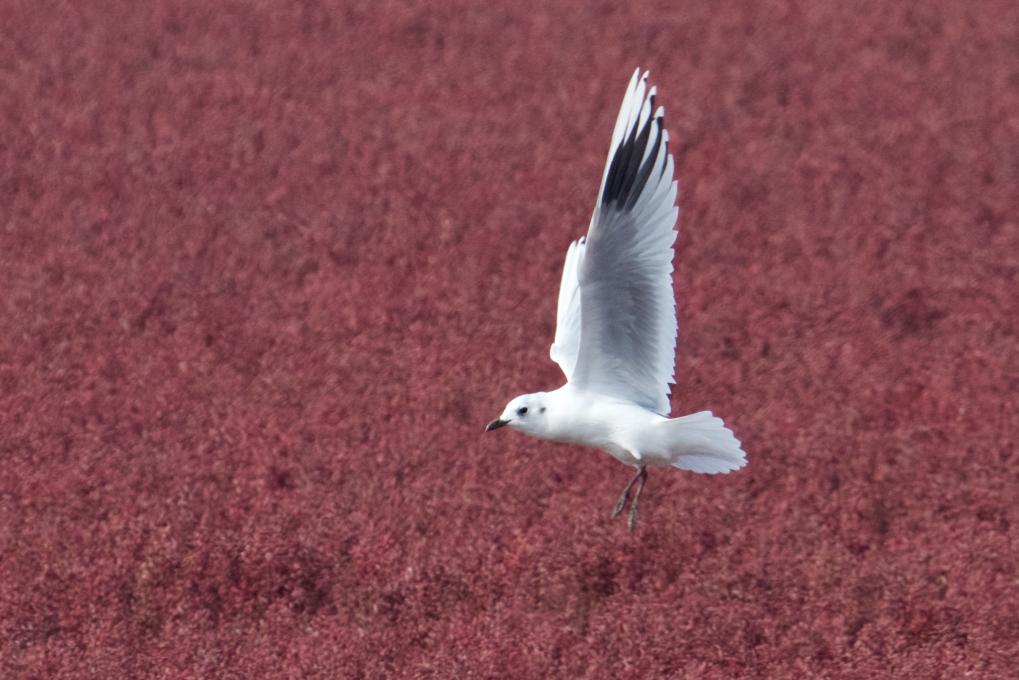
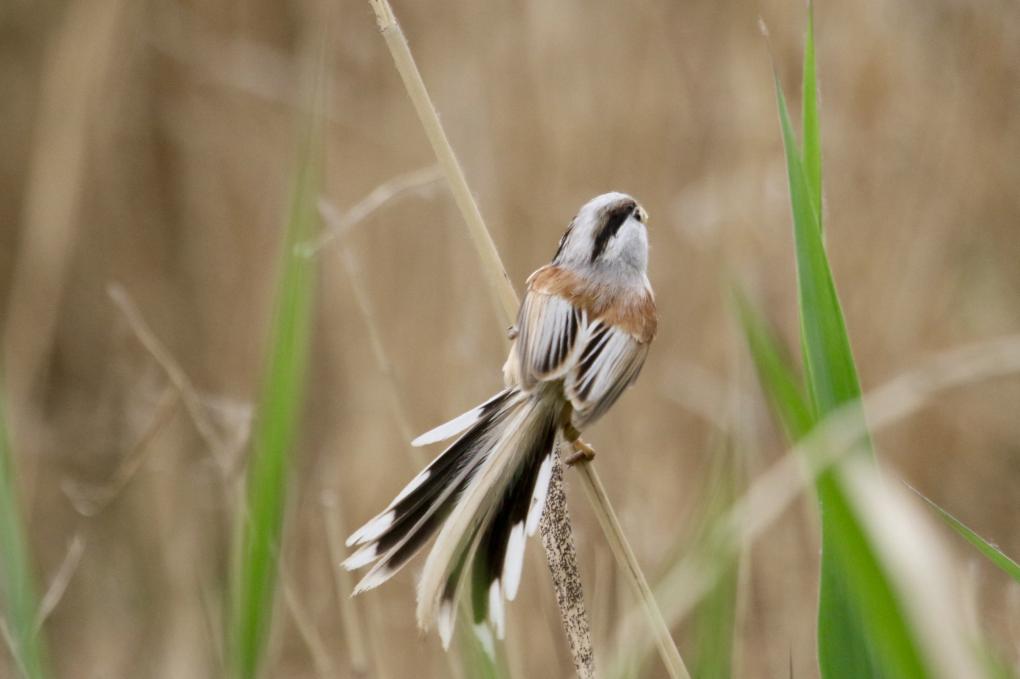
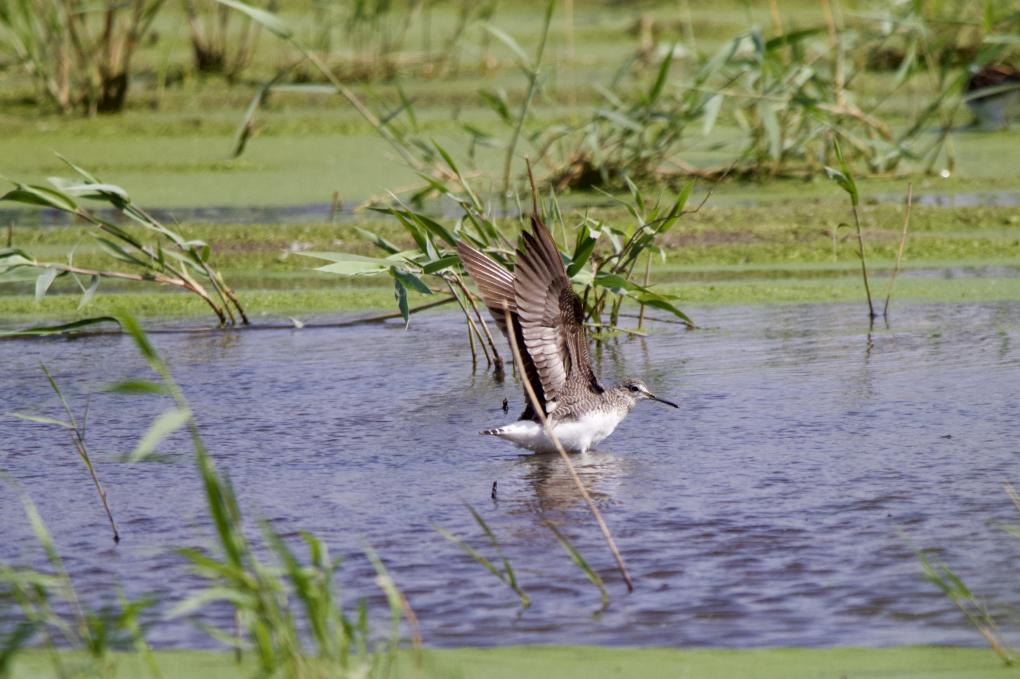 A very important factor is to think hard about what level of equipment is appropriate for you. Probably the first thing to consider is how much money are you intending to put into this? I am not familiar with the others, but I have a lot of hours on the Canon system
I started with an old Canon T3, but soon changed to a Canon 7D II and am extremely happy with it. I have tried a variety of lenses, both Canon and Sigma and would rate the Canon 100-400mm f/4.5-5.6 L IS II to be the best overall choice. With good light the 7D will handle autofocus with the 1.4 teleconverter. I like the crop factor body as I am working semi-professionally from Panjin, Liaoning, China and birds (or any wildlife) are generally very hard to get close to.
I also currently have a Sigma 150-600mm Contemporary lens as my main use lens, which I am happy with, but it is heavy and I intend to end up using it only on tripod with a gimble. Next trip back to the USA I plan to get a new Canon 100-400mm and a 1.4 teleconverter. This all gives me what would be considered to be minimal mid range or semi-professional equipment but it is not necessary to spend as much as I have to obtain some very good photos. (7D about $1400; Canon 100-400mm about $2200; Sigma 18-300mm f/3.5-6.3 about $400; Sigma 150-600 Contemporary about $900)
For a low cost rig as a starter or as good enough for those who just want to share on social media, one could consider something more like the Canon Powershot SX70. I also have one of those and it makes a great travel camera. I often use it to just have something along with me on a walk in the park when I am not really expecting anything special. It is a mirrorless with a non-interchangable lens, but it is a superzoom going from a 35mm equivalent of 21-1365 and is very light weight! Not the best for low light situations, but overall I am very happy with it and you have everything you need to get some excellent birding photos. Best of all, it looks like it is currently going for about $550 USD, a lot less than the $3600 to step up to a minimal 7D birding rig.
The new Canon R5 & R6 give me a serious case of GAS (gear acquisition syndrome), but that like the 5D is stepping up to professional level gear and the prices reflect it. I might justify a 5Ds sometime in the future if the prices drop enough with the introduction of the mirrorless competition.
I probably won't be checking back here much, but I do have a thread on the birdforum.net which is an excellent place to find a supportive world wide community. My thread is at: https://www.birdforum.net/showthread.php?t=301937 and I would be glad to help anyone who posts to it.
A very important factor is to think hard about what level of equipment is appropriate for you. Probably the first thing to consider is how much money are you intending to put into this? I am not familiar with the others, but I have a lot of hours on the Canon system
I started with an old Canon T3, but soon changed to a Canon 7D II and am extremely happy with it. I have tried a variety of lenses, both Canon and Sigma and would rate the Canon 100-400mm f/4.5-5.6 L IS II to be the best overall choice. With good light the 7D will handle autofocus with the 1.4 teleconverter. I like the crop factor body as I am working semi-professionally from Panjin, Liaoning, China and birds (or any wildlife) are generally very hard to get close to.
I also currently have a Sigma 150-600mm Contemporary lens as my main use lens, which I am happy with, but it is heavy and I intend to end up using it only on tripod with a gimble. Next trip back to the USA I plan to get a new Canon 100-400mm and a 1.4 teleconverter. This all gives me what would be considered to be minimal mid range or semi-professional equipment but it is not necessary to spend as much as I have to obtain some very good photos. (7D about $1400; Canon 100-400mm about $2200; Sigma 18-300mm f/3.5-6.3 about $400; Sigma 150-600 Contemporary about $900)
For a low cost rig as a starter or as good enough for those who just want to share on social media, one could consider something more like the Canon Powershot SX70. I also have one of those and it makes a great travel camera. I often use it to just have something along with me on a walk in the park when I am not really expecting anything special. It is a mirrorless with a non-interchangable lens, but it is a superzoom going from a 35mm equivalent of 21-1365 and is very light weight! Not the best for low light situations, but overall I am very happy with it and you have everything you need to get some excellent birding photos. Best of all, it looks like it is currently going for about $550 USD, a lot less than the $3600 to step up to a minimal 7D birding rig.
The new Canon R5 & R6 give me a serious case of GAS (gear acquisition syndrome), but that like the 5D is stepping up to professional level gear and the prices reflect it. I might justify a 5Ds sometime in the future if the prices drop enough with the introduction of the mirrorless competition.
I probably won't be checking back here much, but I do have a thread on the birdforum.net which is an excellent place to find a supportive world wide community. My thread is at: https://www.birdforum.net/showthread.php?t=301937 and I would be glad to help anyone who posts to it. 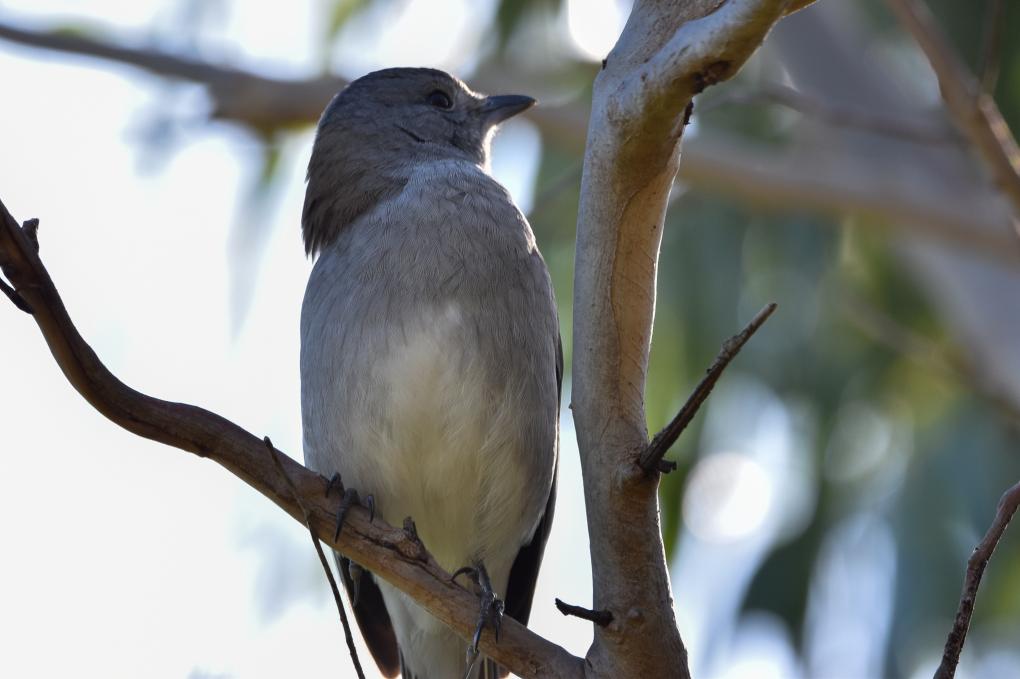
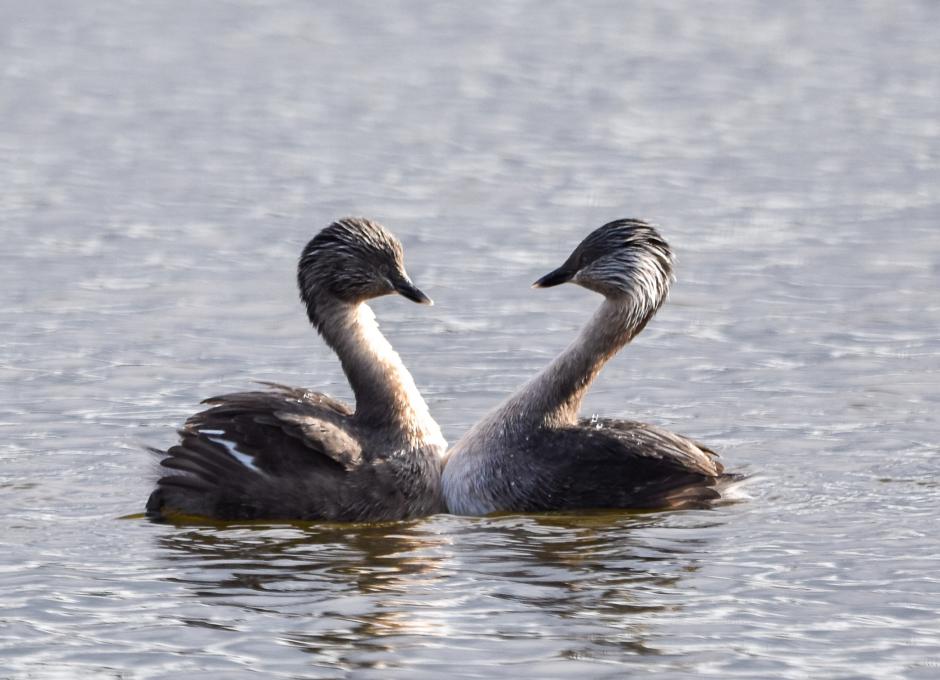 A grey shrike-thrush and two hoary-headed grebes.
A grey shrike-thrush and two hoary-headed grebes. 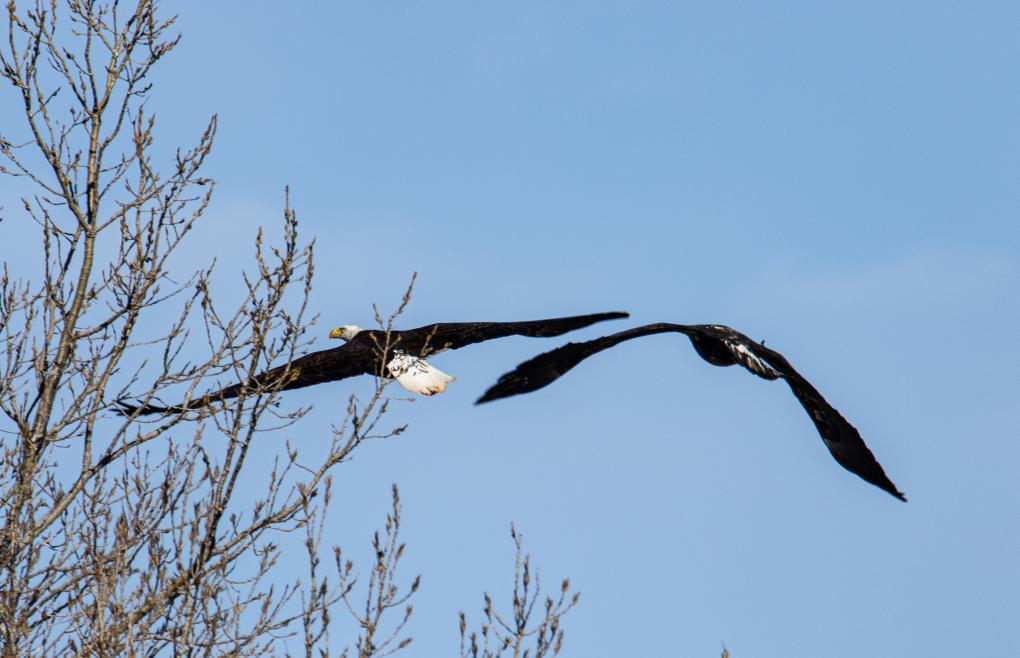
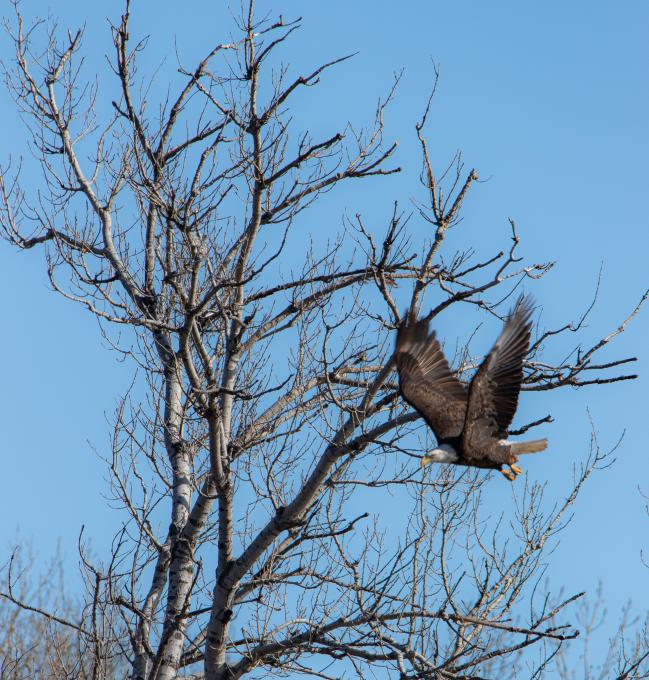
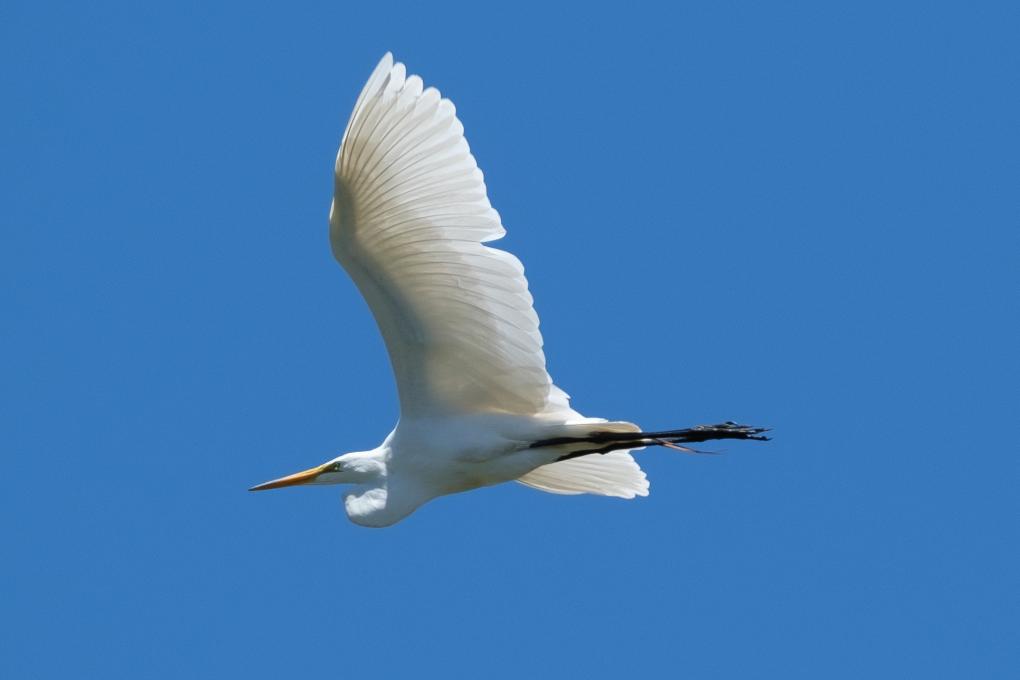
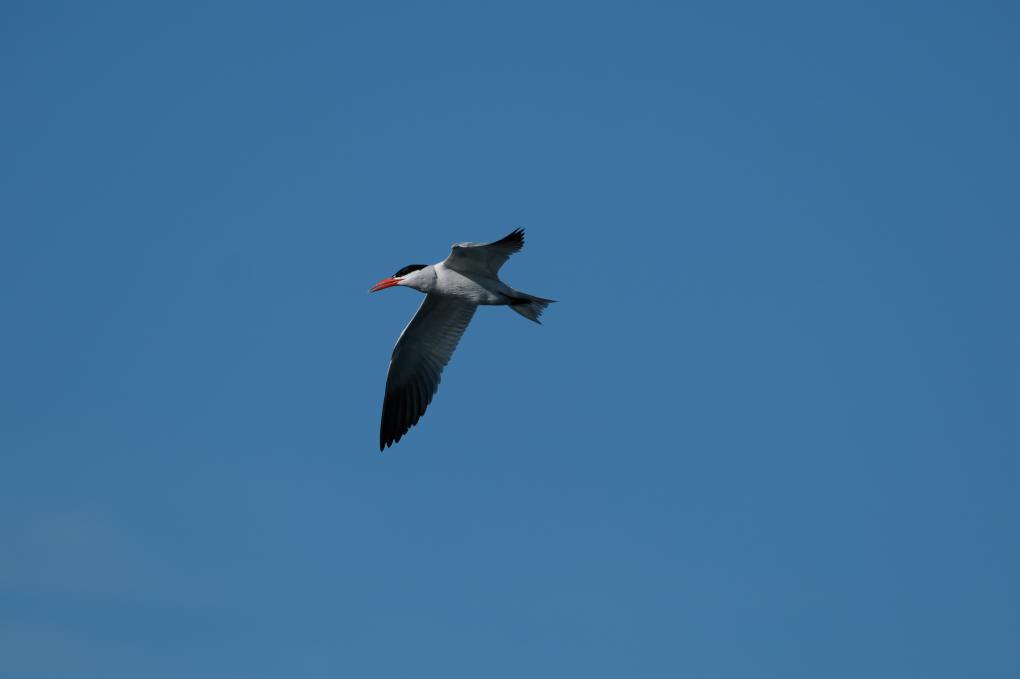
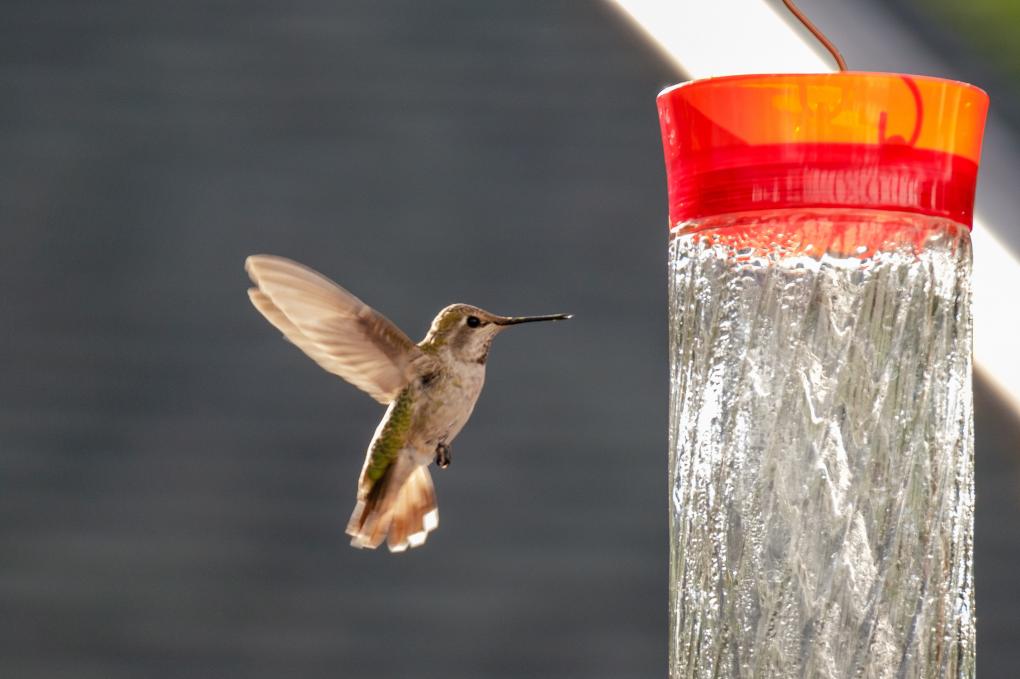

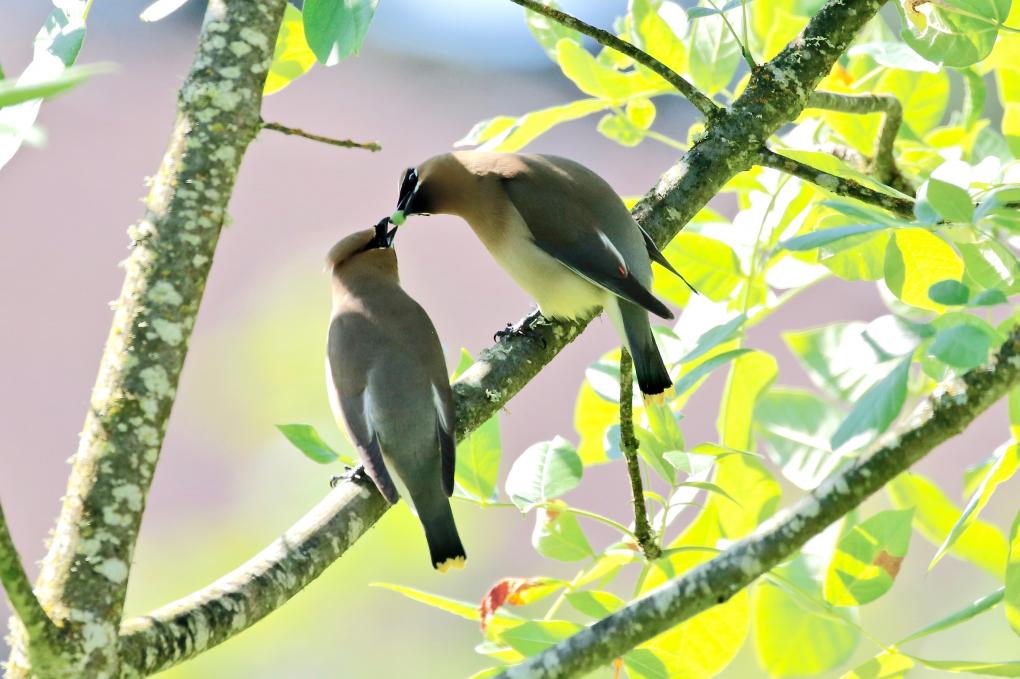

 Sorry I replied to myself, I forgot to share example of photos with my Fuji Film camera - a House Finch (actually two of them), close-up in my backyard - and a male Wood Duck from a distance in a regional park.
Sorry I replied to myself, I forgot to share example of photos with my Fuji Film camera - a House Finch (actually two of them), close-up in my backyard - and a male Wood Duck from a distance in a regional park. 
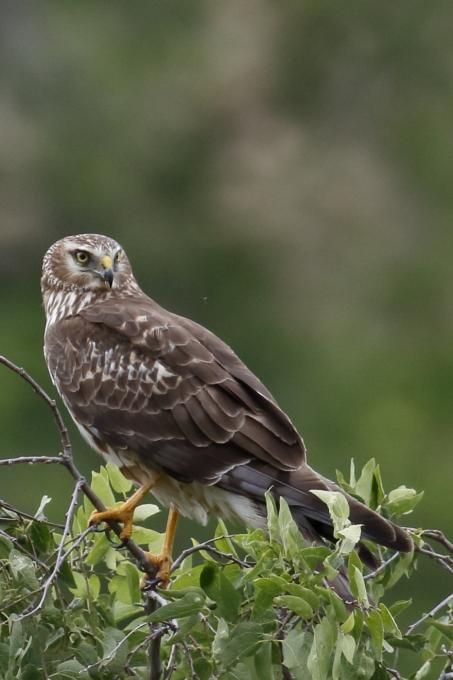
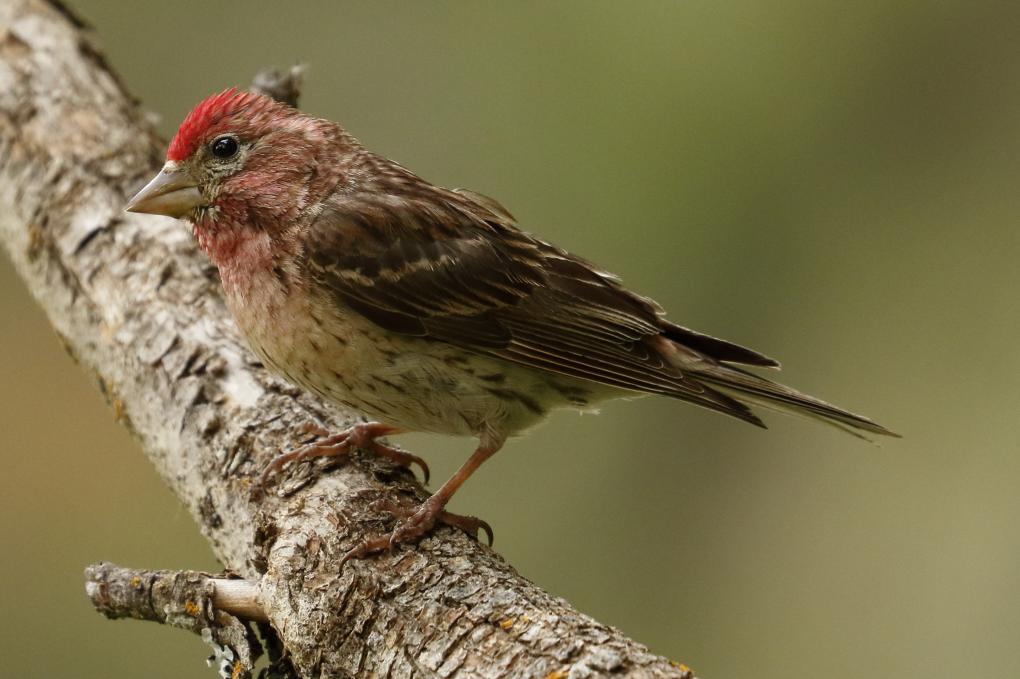
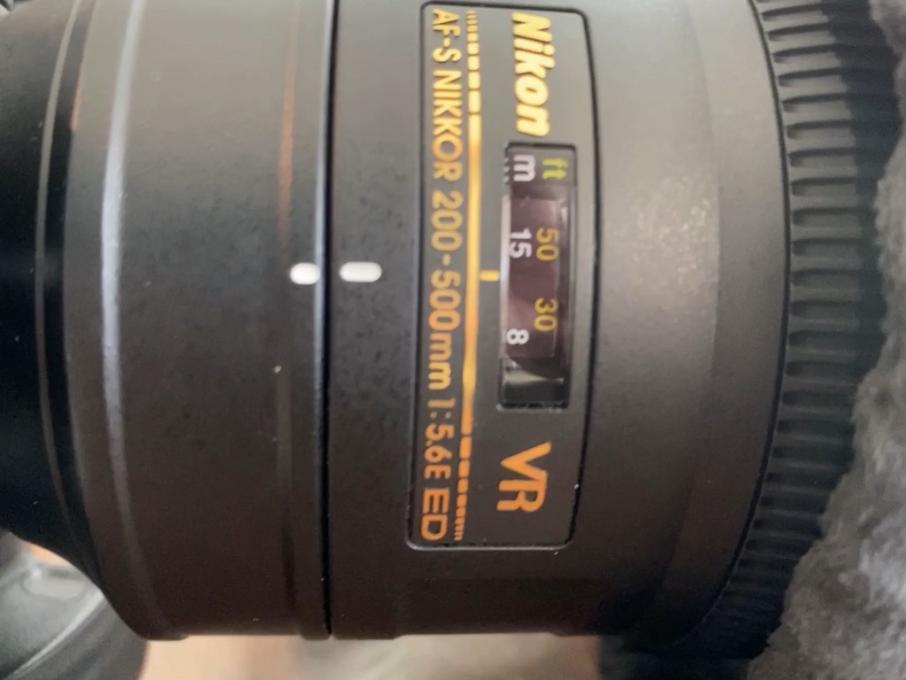
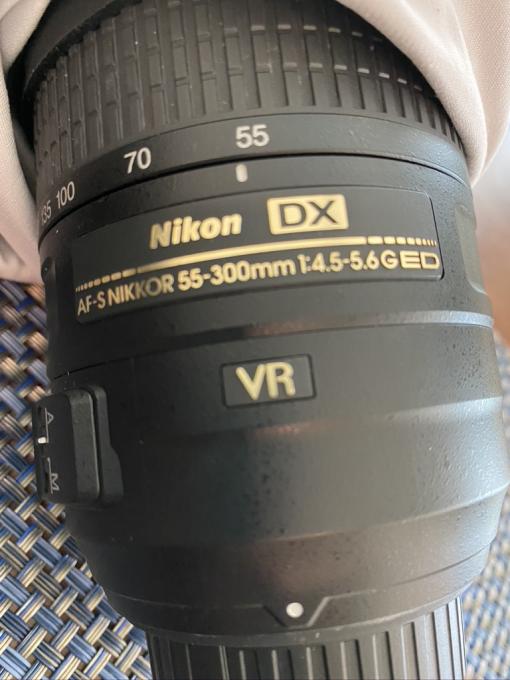 Does Melissa respond to the discussion group? I would like to get a teleconverter for these to lenses and was wondering if there is one specific converter that would work for both.
Does Melissa respond to the discussion group? I would like to get a teleconverter for these to lenses and was wondering if there is one specific converter that would work for both. 